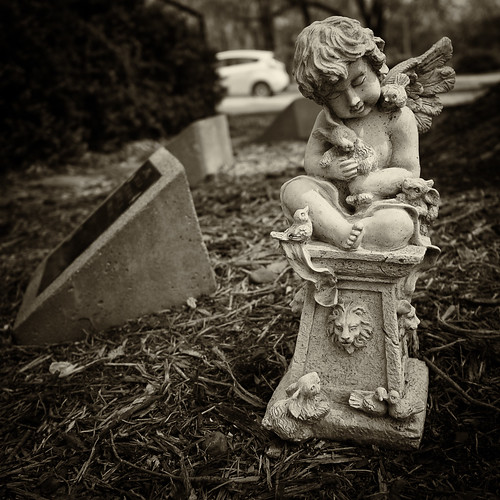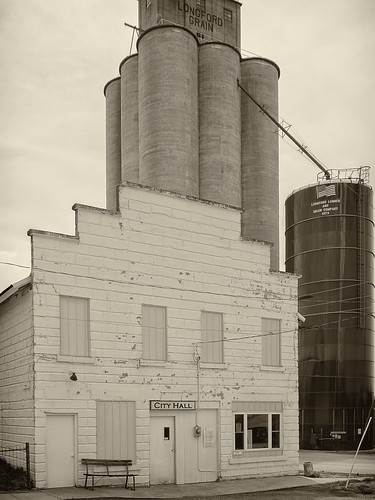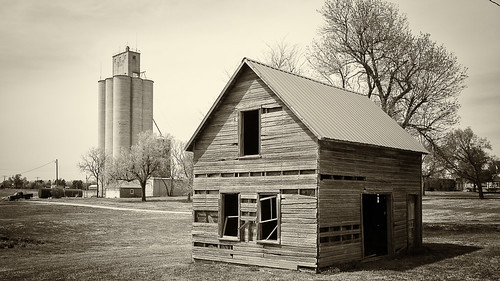I drove to the small town of Longford Kansas on Saturday to help my wife complete a part of her family story. Her father was born in Longford in 1905, moving to Pennsylvania along with his older sister and mother when he was four. The circumstances surrounding their move back to Pennsylvania is heartbreaking.
In 1909 a third child, a daughter, was born into the family. While still an infant she became ill. A local doctor diagnosed the illness and a method of treatment that required medicine. The husband took the money and went off, ostensibly to buy the medicine. Instead he got drunk. He didn’t buy the medicine and the daughter died. Rather than go back and face his wife, he traveled to Reno, Nevada, and got a quick divorce with some of the money he had left. The mother, already distraught over the loss of her baby, now had to deal with being a single parent with two young children, two children she refused to abandon. She wired back to her sister in Pennsylvania and had the sister wire enough money back to her to bury the child and then travel back east with her remaining two children. They passed through Harrisburg, finally settling in Williamsport, where the mother became a school teacher and remained a school teacher for the rest of her life.
The four year old boy grew up to become a Methodist minister and the father of my wife, who was the youngest of his three daughters. He spent the majority of his ministry in the Harrisburg area, eventually moving to Emporium, his last charge.
Longford played a part in my father-in-law’s life even after he’d grown up and was a minister. He needed to travel to Oxford, England, as an outstanding Methodist minister in 1967 (the 200th anniversary of John Westley’s establishment of the Methodist church) and he needed a passport. Then, as now, you needed a birth certificate. But back then, in 1905, in Longford, you didn’t get a birth certificate, your birth was registered at the local church through baptism. Sure enough church records recorded his birth and baptism as well as who his mother and father were. With that information wired back east, he was able to give credible evidence of his birth as an American citizen and get his passport.
I drove out, looking around the town, took some photographs, and then tried to find the spot where the young infant might be buried. Unfortunately the church was closed and I couldn’t find the parsonage where I might have spoken with minister. I found a close-by cemetery, but didn’t find anything that might have been a children’s section or even anything that might have been her final resting place.
I didn’t expect to. I believe that the mother had just enough money to cover the cost of a funeral. I’m still looking through other means to see if I can at least track down the cemetery where she might have been laid to rest. I don’t believe, after all this time, I’ll ever find the grave site.
My father-in-law (who has long since passed away) and his family’s story is not the only one like this, I’m sure. Turn of the 20th century life in America was still harsh (and in many ways, still is), and this story played out innumerable times across the west. Women had a hard time of it, particularly mothers with children. Although Kansas would pass full suffrage in 1912, and the 19th amendment granting women the right to vote would be passed in 1920, this was the first decade of the 20th century and out in the rural farmlands of Kansas. There was no structure in place to go after the wayward husband, neither for child support or the greater charge of manslaughter. To add insult to injury, a divorced woman at that time was considered a pariah, regardless of the circumstances. What husband would be so selfish to abandon his wife to such a fate, or a father so inhuman to allow their child to die?
For a town that was so small, I still managed to spend nearly three hours there, walking around. I spent a good portion of that time at one of the local cemeteries about three miles north of the town. While I was there in town it was totally quiet. No urban noises to be heard anywhere. The single spot in the business center of town consisted of a gas station, a bank, the town hall, and a place to eat. I grabbed a “beef sandwich” while I was there, which consisted of a bit of roast between two large pieces of white bread, with mashed potatoes on top and all of that slathered in gravy. I ate some of the mashed potatoes, and then dug through the bread to eat the beef. It was a short meal, with one of the patrons deciding to sit next to me to chat. I’m no chatterer, which made for long periods of silence at my table. I was quickly finished and left cash at my table, the cost of the meal plus a tip.
I mention the lack of noise, but it wasn’t silent. What I did hear was birdsong and the constantly blowing Kansas wind. It was strong enough at one point to push forcefully against me, up on a hill in the cemetery. I can’t even begin to imagine what it might be like to live with constantly blowing wind like that. And yet, in spite of it, I find a strong spiritual pull to the land.
The trip to Longford was nearly three hours one way, from Lansing just south of Leavenworth, west on I-70 through Topeka, and further west out to Longford. I’m a product of my American culture, from the mid-twentieth century, and one of the things we like to do is drive. And drive I did. The speed limit on I-70 is 75, and I was driving even faster, between 80 and 85. I have a Ford Fiesta rental this time, and its gas mileage, regardless of speed, averages 32MPG. If I’d had my Prius I’d have done at least 15MPG better.
I drove through a lot of Kansas history on the way to Longford. I expect to be coming back out to Leavenworth later in the year, so I’ll be headed back out to spend more time at some of those historical spots. Although Kansas City is a lot closer, and has a lot more conventional activities, I’d rather spend my time studying the “real Kansas.” Life’s too short to let those kind of opportunities pass by.
Camera
It’s been a very long time since I wrote about the camera I used when I posted an entry with photographs. But perhaps not this time. I’m in Kansas with my Olympus E-M5 and three primes; the Olympus 1.8/17mm, the Pan-Leica 1.4/25mm, and the Olympus 1.8/45mm. It’s the 17mm that’s the latest, and for all practical purposes, last addition.
This is the third 17mm I’ve purchased, the first two being the 2.8/17mm pancake lenses. The first was sold, the second given away. This third was bought the Saturday before I flew out to Leavenworth, with funds I got from KEH on the E-PL3 I traded in at Colonial Photo and Hobby in Orlando. I got pretty much all the money back I originally spent on the E-PL3, and Olympus had an additional $100 off sale on the 1.8/17mm at the time, so I picked up that lens.
It’s a very nice lens, all metal. I got the silver version, and to be honest, it looks good on the all-black E-M5. It’s not a true silver, but more a champagne color. I don’t care about lens colors any more. The lens is totally silent in operation and very quick to auto focus. The results are quite good to my eyes, especially the lack of chromatic aberrations. I pixel peeped the raw files a bit, and didn’t see any, especially in the branches. It was all over on the 2.8/17mm, especially in bright back lighting. But I had a lot of fun with the 2.8, and I’m having fun with this latest version.






